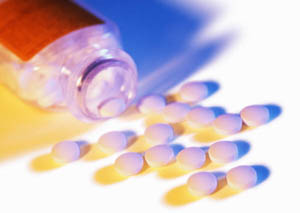At present time there are five statin drugs: lovastatin, simvastatin, pravastatin, fluvastatin and atorvastatin. The greatest effect of statins is lowering LDL cholesterol levels, as well as lowering them more than other drugs that are available on the market. Statins inhibit an enzyme, HMG-CoA reductase, which controls the rate of cholesterol production. Statins decrease the cholesterol levels by slowing down the production of cholesterol and by increasing the liver's ability to remove LDL cholesterol that is in the blood. Statins have also been reported to lower LDL cholesterol by 20 to 60 percent. These drugs also are well tolerated with very minimal side effects. Some individuals may experience an upset stomach, gas, constipation or abdominal pain.
Bile acid sequestrants, on the other hand, bind with cholesterol bile acids in the intestines and eliminated in the stools. This drug lowers LDL cholesterol by 10 to 20 percent. Bile acid sequestrants are sometimes prescribed with statin drugs to increase the cholesterol reduction. WHen these tow are combined, the effects to lower LDL cholesterol increases by over 40 percent. Three bile acid sequestrants most commonly used are cholestyramine, colestipol and colesevelam.
Nicotinic acid or nianic lower total cholesterol, LDL cholesterol and triglycereide level, while also raising HDL cholesterol levels. There are three types of nicotinic acid: immediate release, timed release, and extended release. This type of drug is ienxpensive and widely accessible to individuals. A common side effect of nicotinic acid is flushing or hot flashes, which result from blood vessels opeining wide. Other side effects seen with nicotinic acid include nausea, indigestion, gas, vomiting, diarrhea, and activation of peptic ulcers.
Another drug called fibrates are effective in lowering triglycerides and increasing the HDL cholesterol levels. Unfortunately, they are not very effective for lowering LDL cholesterol. The reduction by this drug ranges between 20 to 50 percent. Fibrates are well tolerated, however they increase the likelihood of developing cholesterol gallstones.
References:
Helyar, J. (2002). It's All About The Drugs: High cholesterol. Fortune , 145 (1).
Link,N., & Tanner, M. (2001).Hyperlipidemia: Part 2. Pharmacologic management.The Western Journal of Medicine, 175 (6).
Venis,S. (2002). Huge increase in patients eligible for lipid-lowering drugs. The Lancet, 359 (9302).
